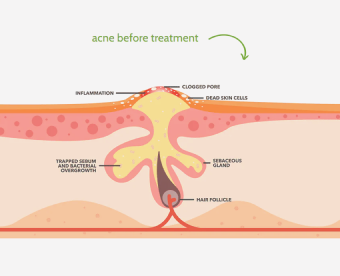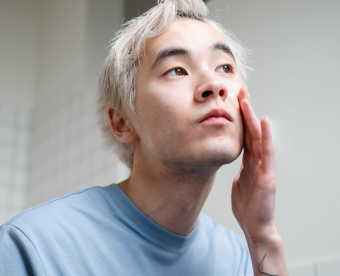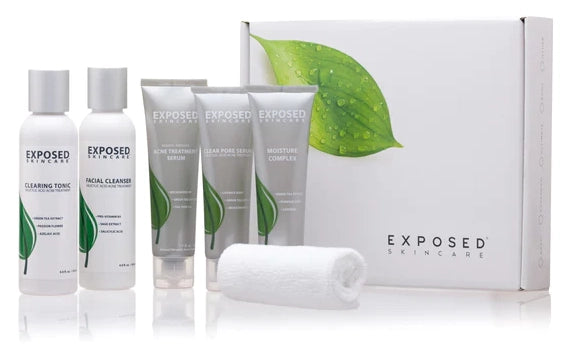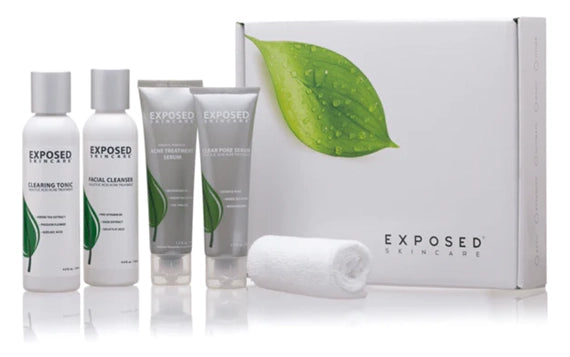Cystic acne on the thigh is a concerning skin condition affecting your physical and emotional well-being. It is characterized by deep, painful, and often swollen bumps beneath the skin's surface. It requires a strategic approach to prevent and manage.
This guide will dive into the causes, treatments, and strategies to prevent cystic acne on your thighs, ensuring you have the knowledge to maintain healthy, clear skin.
Also read: How to choose the best acne treatment
Biggest Take-Aways:
- Cystic acne, particularly in areas of friction, is often caused by bacterial infections in hair follicles or oil glands.
- Home treatment options, such as warm compresses and maintaining hygiene, can effectively manage these conditions.
- In some cases, medical attention is necessary to prevent complications, especially when symptoms worsen or spread.
- Exposed Skin Care offers a comprehensive solution for managing skin conditions, blending scientific ingredients with natural extracts for gentle yet effective treatment.
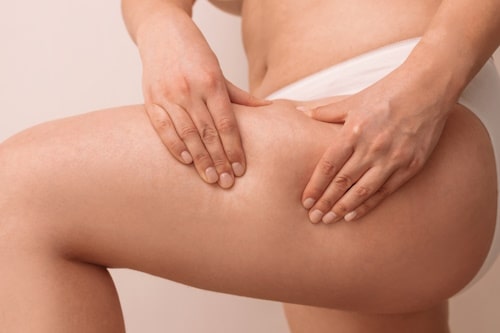
Understanding Cystic Acne on the Thigh
What is Cystic Acne?
Before diving into the specifics of thigh acne, it's essential to understand what cystic acne is. Cystic acne is a severe form of acne where pimples form deep under the skin, resulting in large, red, and painful cysts. These are different from regular pimples commonly visible on the skin's surface.
Why Does it Occur on the Thigh?
Various factors influence the occurrence of cystic acne on the thigh. The thighs, particularly the inner thigh area, are prone to friction and are often in contact with clothing, which can irritate the skin.
Sweat and bacteria in areas where skin rubs together, like the groin, inner thigh, and sometimes even the armpit, create an environment conducive to developing acne and skin infections.
Causes and Risk Factors
Hair Follicle and Skin Infections
A primary cause of cystic acne on the thigh is the hair follicle or oil gland infection. When these follicles or glands get blocked, they can become painful and deep cysts.
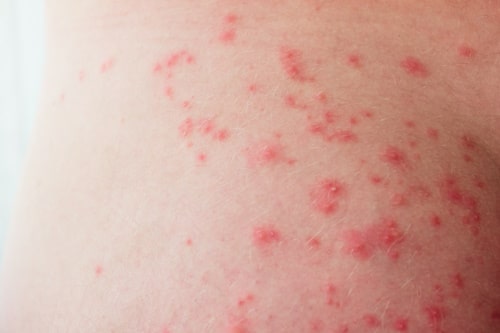
Hidradenitis Suppurativa (HS)
HS is a chronic skin condition that causes small, painful lumps under the skin, often in areas where the skin rubs together. This can lead to abscesses and scarring, resembling severe acne.
Risk Factors
Several risk factors contribute to the development of cystic acne on the thigh. These include hormonal imbalances, certain types of skin, and lifestyle factors such as tight clothing that causes friction. People who sweat excessively or have a history of skin diseases are also at a higher risk.
Effective Treatment Strategies
Home Remedies for Early Stages
Home treatment can be effective, especially in the early stages of thigh acne. Simple measures like keeping the area clean, using warm compresses to soothe the skin, and applying over-the-counter acne treatments can help.
When to Seek Medical Attention
If symptoms persist or the condition worsens, seeking medical attention becomes necessary. In cases where a cyst is not draining or is in an area where it's hard to avoid friction, professional advice is crucial.
Advances in Skincare and Medications
Significant advances have been in skincare treatments and medications for managing cystic acne on the thigh. These include topical and oral medications that target the deeper parts of your skin to reduce inflammation and prevent further outbreaks.

Preventive Measures and Skincare Tips
Daily Skincare Routine
A daily skincare routine is vital in managing and preventing cystic acne on the thigh. This includes gentle cleansing, avoiding harsh scrubs that can aggravate the skin, and using non-comedogenic moisturizers.
Clothing and Lifestyle Adjustments
Wearing loose, breathable clothing can significantly reduce the risk of developing cystic acne on the thigh. Avoid tight garments that cause friction, and choose materials that wick away moisture.
Diet and Hydration
While diet alone does not cause cystic acne, maintaining a balanced diet and staying hydrated can support overall skin health, potentially reducing outbreaks.
Specific Treatments for Cystic Acne on Thigh
Topical and Oral Treatments
For specific treatment of cystic acne on the thigh, dermatologists often prescribe topical treatments that help to reduce inflammation and oral antibiotics to fight skin infections.
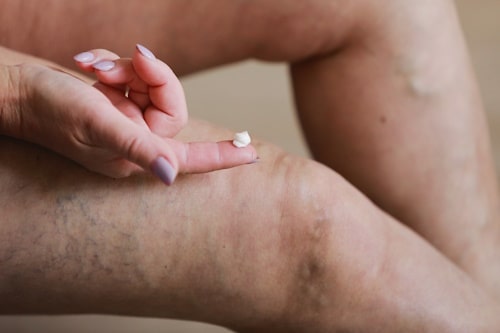
Surgical Interventions
In severe cases, surgical interventions might be necessary. This includes drainage of large cysts or abscesses by a healthcare professional to prevent the spread of bacteria and reduce scarring.
Holistic and Long-Term Management
Managing cystic acne on the thigh is not just about treating the symptoms. It involves a holistic approach that includes lifestyle changes, stress management, and regular skincare to prevent future outbreaks.
Advanced Skincare Technologies
Innovations in Acne Treatment
The field of dermatology is continuously evolving, with new technologies and treatment methods being developed. These include light therapy, laser treatments, and advanced topical formulations for deep-seated acne, like cystic acne on the thigh.
Importance of Skincare Education
Staying informed about the latest skincare trends and understanding the science behind acne treatments is crucial. Education on skin health empowers individuals to make informed decisions about their skincare routine and treatment options.
The Benefits of Using Exposed Skin Care for Acne Management
Managing acne, especially in sensitive areas such as the inner thigh, groin, and armpit, requires specialized care. Exposed Skin Care offers a comprehensive solution to tackle these challenges effectively. Its unique blend of scientific ingredients and natural extracts is designed to address various forms of acne.
Here are some key benefits of using Exposed Skin Care for acne management:
- Targeted Treatment: The products are formulated to target acne in specific areas, like pimples on the inner thigh, without irritation.
- Gentle on Sensitive Skin: Ideal for areas like the groin and armpit, Exposed Skin Care products are gentle and do not aggravate sensitive skin.
- Reduction in Inflammation: The natural extracts in the products help reduce inflammation and discomfort associated with acne.
- Prevention of Future Breakouts: Regular use helps prevent future breakouts in these areas of the body.
- Non-Comedogenic: Exposed Skin Care products are non-comedogenic, meaning they won't clog pores, a common issue in areas like the inner thigh and groin.
By avoiding harsh chemicals and using a balanced approach, Exposed Skin Care provides an effective and safe way to manage acne, even in the body's most sensitive areas.
Conclusion
Cystic acne, resulting from an infection in a hair follicle or oil gland, can swell and become itchy or painful. It's a common type of skin condition that a significant percentage of the population experiences.
Managing such skin conditions requires understanding and patience, as symptoms and treatments can vary. HS (Hidradenitis Suppurativa) is a skin disease that causes bumps on the skin, particularly in areas prone to friction.
The risk of complications from cystic acne and HS symptoms often require medical attention, especially when they are draining or in an area that's hard to avoid friction. While many acne can develop and clear independently, some may require assistance to drain the pus and ensure the infection does not spread.
Adhering to strict sourcing guidelines and peer-reviewed studies from academic research institutions is crucial in understanding and managing these skin conditions. Home treatments, like compresses, can help clear acne.
In managing skin conditions like cystic acne on the thigh, products like Exposed Skin Care can be beneficial. They are formulated to treat various skin types gently yet effectively, preventing the further spread of bacteria and aiding in the healing process.
Exposed Skin Care, aligning with effective skin health management principles, offers a balanced approach to treating and preventing skin issues, including cystic acne, ensuring healthier and clearer skin.
FAQs
What Causes Cystic Acne on the Inner Thigh?
Cystic acne on thigh is often caused by an infection in the hair follicles or oil glands, typically due to bacteria entering through cuts or friction.
Are There Specific Symptoms of HS (Hidradenitis Suppurativa) to Look Out For?
HS symptoms include painful, pea-sized lumps under the skin, typically in areas where skin rubs together, like the armpits or groin. These lumps can enlarge, become inflamed, and often drain pus.
When Should I Seek Medical Attention for a Skin Abscess?
Seek medical attention if the abscess becomes increasingly painful or large or shows signs of spreading infection (like fever or significant redness).
How Can Exposed Skin Care Help with Skin Abscesses and Acne?
Exposed Skin Care products are designed to treat acne and skin abscesses gently yet effectively. They help clear existing blemishes and prevent future outbreaks and are suitable for various skin types.

